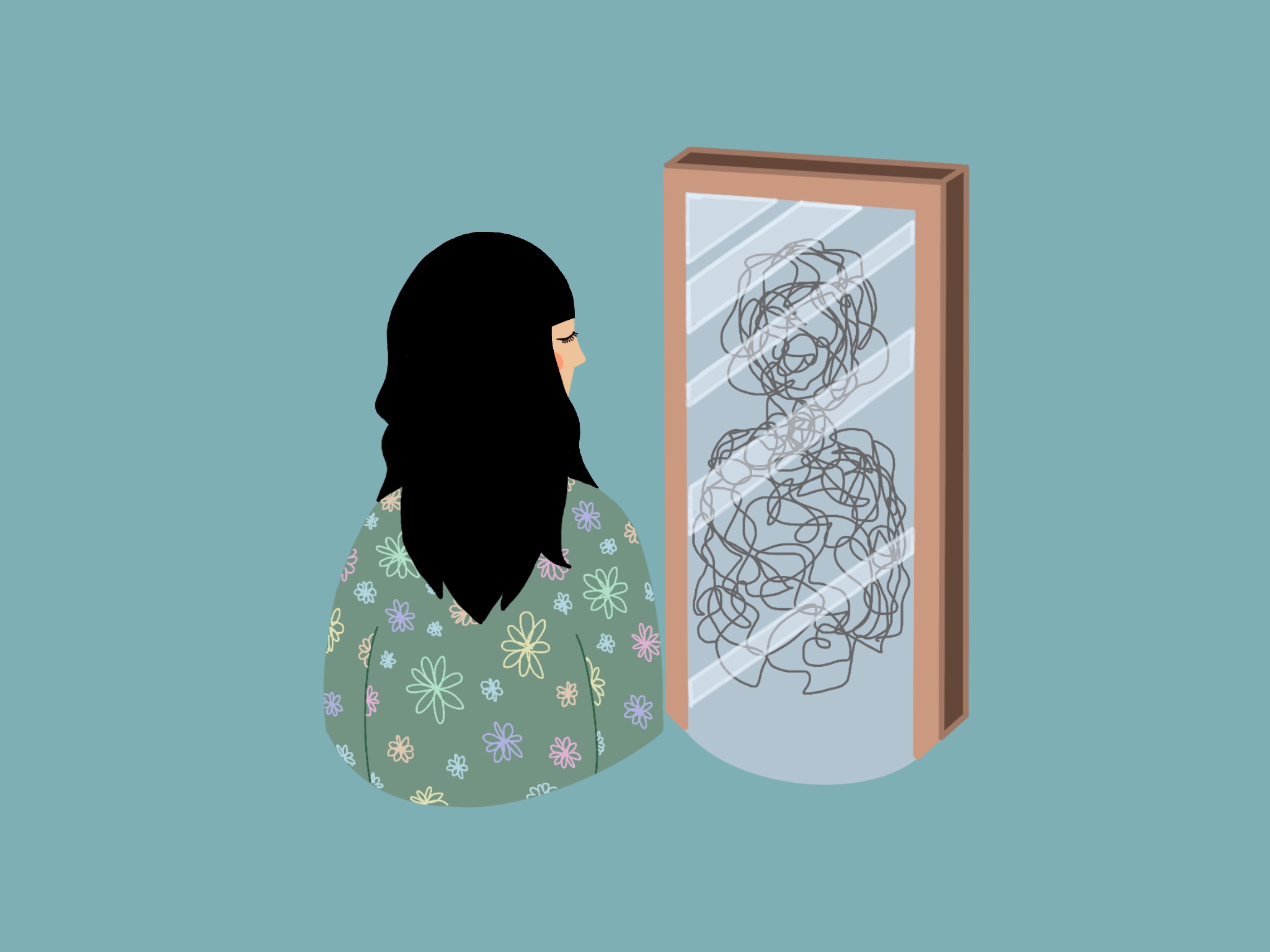
In an ideal world, none of us would have any unease regarding our appearance. Alas, we all have our insecurities and we may either try to correct them, or accept them. In the case of those suffering from eating disorders, often tackling the underlying body dysmorphia which is a disorder concerning skewed body image, the acceptance of perceived imperfection is critical to recovery. However, in transgender individuals, whose insecurity is rooted in misrepresented identity, the desire to self-correct can quickly turn into a trap.
In an ideal world, none of us would have any unease regarding our appearance. Alas, we all have our insecurities and we may either try to correct them, or accept them. In the case of those suffering from eating disorders, often tackling the underlying body dysmorphia which is a disorder concerning skewed body image, the acceptance of perceived imperfection is critical to recovery. However, in transgender individuals, whose insecurity is rooted in misrepresented identity, the desire to self-correct can quickly turn into a trap.

Illustration by Arianna Cavalli

Illustration by Arianna Cavalli
While there are a lot of groups vulnerable to the development of eating disorders, one of the most prominent is transgender people – the reason for that is complex, but not all that enigmatic. Research suggests that there is a positive association between identifying as a gender different than the one assigned at birth and eating disorder symptoms (Feder et al., 2017). Even without the vulnerability factor of being a marginalized group, there are many contributors in the development of eating disorders.
Aside from the obvious component of body dissatisfaction, other sociocultural factors play a part in one developing eating disorder. The influence of peers, media, and cultural factors all have some role, but contrary to popular belief, this is not the most prominent reason that is suggested by research. Familial influence is often the one which exacerbates symptoms, as they are a part of the individual’s immediate environment. Further, if the family environment is abusive, this influence can be even stronger. In fact, childhood abuse or negative affect (i.e. stress, insecurity) are among some of the most prominent contributors to developing an eating disorder. Alongside the desire to ‘self-correct’, ergo to align one’s appearance with desired or perceived image, a significant aspect of eating disorders may be a desire to regain control (Polivy and Herman, 2002).
Given this information, it makes sense how being transgender can increase one’s chances of developing an eating disorder. First of all, belonging to a marginalized group that is still not granted full or even partial legal protection across the globe leads many transgender individuals to face discrimination, abuse or even persecution by their closest community or family. The hypothesis of the desire to regain control as a factor in eating disorders (Polivy and Herman, 2002) can provide some explanation for the association between being transgender and the heightened risk of eating disorders.
However, there may be more to the story. As mentioned before, many individuals who suffer from body dysmorphia develop an eating disorder to ‘correct’ their self-perception. They believe they look different from what they do in reality – and while not directly analogical, the concept of gender dysphoria may very well explain the driving force of eating disorders in transgender people. Both body dysmorphia and gender dysphoria derive from a feeling of unease with one’s body (Bandini et al., 2013). Gender dysphoria is considered one of the prerequisites of realizing you are transgender – it is essentially the discomfort one feels due to the mismatch of gender identity and gender assigned at birth. Using the same line of thinking, behavior aligned with eating disorders may be a strategy to align one’s physical appearance to one’s self-perception. Though misguided, it may be seen as an attempt to exert control over the uncontrollable.
As it turns out, there is research to support this idea. One study on eating disorder recovery suggests that weight gain associated with recovery is often feared in trans- and trans-nonbinary individuals because of the reappearance of secondary sex characteristics (Ewan et al., 2014). In another study, interviews with transgender people fitting disordered eating diagnostic criteria showed that among others, gender dysphoria and controlling the onset of puberty was a large contributor in their struggles with eating and exercise (Cusack et al., 2022).
“When such a critical part of one’s identity is mismatched with personal and societal perceptions of it, the following desperate measure of controlling it seems like a frenzied reach for a solution in a situation that feels hopeless.”
Notably, one of the participants, a transman, says:
“My psychiatrist suggested my eating disorder started with dysphoria and hating my body because it was too feminine. I know that getting rid of curves and my chest was one of the main reasons it got so bad. […] When my ED was at its worst, it was a way of controlling things, and that included dysphoria and my body”.
Similarly, a transwoman adds that she has “had anorexia as a teenager as an attempt to stunt [their] growth and avoid growing muscle mass”. As a trans-nonbinary person myself, this sentiment is very familiar’; I remember how the main driving force for my personal struggle with food and exercise was brought upon by the desire to de-emphasize my feminine appearance. From personal experience it seems that unfortunately, struggles with eating disorders (and other mental illnesses) among my transgender friends is more so the rule than the exception. When such a critical part of one’s identity is mismatched with personal and societal perceptions of it, the following desperate measure of controlling it seems like a frenzied reach for a solution in a situation that feels hopeless.
Worth noting though, is that while suppression of natal sex characteristics are often at the forefront of eating disorders in transgender individuals, this does not tell the whole story. To an extent, eating disorders may be used as a coping mechanism for living in an unaccepting society (Zamantakis & Lackey, 2021). Once again, the aforementioned factor of desire for control shows up – an eating disorder, allowing one to exert control over an area of life, gives the feeling of control that is otherwise not present if one’s community is alienating, discriminatory, or abusive. As such, it is crucial to understand the psychopathology of eating disorders in transgender people in order to gain an understanding of what to tackle in treatment.
If you found this article depressing, I do have some promising news to offer. It seems that most of the contributors to the development of eating disorders in transgender individuals have a ‘simple’ cure – acceptance. Gender reassignment and other gender affirming care has some pretty solid support as a tool to alleviate disordered eating symptoms (Ålgars et al., 2012). While it is arguably not a ‘cure all’ solution, it is one that combined with heightened acceptance in society, can turn a complex treatment issue into standardized protocol.
References
-
Ålgars, M., Alanko, K., Santtila, P., & Sandnabba, K.N. (2012) Disordered Eating and Gender Identity Disorder: A Qualitative Study. Eating Disorders, 20(4), 300-311. https://doi.org/10.1080/10640266.2012.668482
-
Bandini, E., Fisher, A.D., Castellini, G., Sauro, C.L., Lelli,L., Meriggiola, M.C., Casale, H., Benni, L., Ferruccio, N., Faravelli, C., Dettore, D., Maggi, M., Ricca, V. (2013) Gender Identity Disorder and Eating Disorders: Similarities and Differences in Terms of Body Uneasiness, The Journal of Sexual Medicine, 10(4), 1012–1023. https://doi.org/10.1111/jsm.12062
-
Cusack, C. E., Iampieri, A. O., & Galupo, M. P. (2022). “I’m still not sure if the eating disorder is a result of gender dysphoria”: Trans and nonbinary individuals’ descriptions of their eating and body concerns in relation to their gender. Psychology of Sexual Orientation and Gender Diversity, 9(4), 422–433. https://doi.org/10.1037/sgd0000515
-
Ewan, L. A., Middleman, A. B., & Feldmann, J. (2014). Treatment of anorexia nervosa in the context of transsexuality: a case report. The International journal of eating disorders, 47(1), 112–115. https://doi.org/10.1002/eat.22209
-
Feder, S., Isserlin, L., Seale, E., Hammond N., & Norris, M.L. (2017) Exploring the association between eating disorders and gender dysphoria in youth. Eating Disorders, 25(4), 310-317. https://doi.org/10.1080/10640266.2017.1297112
-
Polivy, J., & Herman, C.P. (2002) Causes of Eating Disorders. Annual Review of Psychology, 53(1), 187-213. https://doi.org/10.1146/annurev.psych.53.100901.135103
-
Zamantakis, A. and Lackey, D. (2022). Dying to be (A)Gendered: An Exploratory Content Analysis of Trans/Nonbinary People’s Experiences with Eating Disorders. Sociol Inq, 92, 870-893. https://doi.org/10.1111/soin.12425
While there are a lot of groups vulnerable to the development of eating disorders, one of the most prominent is transgender people – the reason for that is complex, but not all that enigmatic. Research suggests that there is a positive association between identifying as a gender different than the one assigned at birth and eating disorder symptoms (Feder et al., 2017). Even without the vulnerability factor of being a marginalized group, there are many contributors in the development of eating disorders.
Aside from the obvious component of body dissatisfaction, other sociocultural factors play a part in one developing eating disorder. The influence of peers, media, and cultural factors all have some role, but contrary to popular belief, this is not the most prominent reason that is suggested by research. Familial influence is often the one which exacerbates symptoms, as they are a part of the individual’s immediate environment. Further, if the family environment is abusive, this influence can be even stronger. In fact, childhood abuse or negative affect (i.e. stress, insecurity) are among some of the most prominent contributors to developing an eating disorder. Alongside the desire to ‘self-correct’, ergo to align one’s appearance with desired or perceived image, a significant aspect of eating disorders may be a desire to regain control (Polivy and Herman, 2002).
Given this information, it makes sense how being transgender can increase one’s chances of developing an eating disorder. First of all, belonging to a marginalized group that is still not granted full or even partial legal protection across the globe leads many transgender individuals to face discrimination, abuse or even persecution by their closest community or family. The hypothesis of the desire to regain control as a factor in eating disorders (Polivy and Herman, 2002) can provide some explanation for the association between being transgender and the heightened risk of eating disorders.
However, there may be more to the story. As mentioned before, many individuals who suffer from body dysmorphia develop an eating disorder to ‘correct’ their self-perception. They believe they look different from what they do in reality – and while not directly analogical, the concept of gender dysphoria may very well explain the driving force of eating disorders in transgender people. Both body dysmorphia and gender dysphoria derive from a feeling of unease with one’s body (Bandini et al., 2013). Gender dysphoria is considered one of the prerequisites of realizing you are transgender – it is essentially the discomfort one feels due to the mismatch of gender identity and gender assigned at birth. Using the same line of thinking, behavior aligned with eating disorders may be a strategy to align one’s physical appearance to one’s self-perception. Though misguided, it may be seen as an attempt to exert control over the uncontrollable.
As it turns out, there is research to support this idea. One study on eating disorder recovery suggests that weight gain associated with recovery is often feared in trans- and trans-nonbinary individuals because of the reappearance of secondary sex characteristics (Ewan et al., 2014). In another study, interviews with transgender people fitting disordered eating diagnostic criteria showed that among others, gender dysphoria and controlling the onset of puberty was a large contributor in their struggles with eating and exercise (Cusack et al., 2022).
“When such a critical part of one’s identity is mismatched with personal and societal perceptions of it, the following desperate measure of controlling it seems like a frenzied reach for a solution in a situation that feels hopeless.”
Notably, one of the participants, a transman, says:
“My psychiatrist suggested my eating disorder started with dysphoria and hating my body because it was too feminine. I know that getting rid of curves and my chest was one of the main reasons it got so bad. […] When my ED was at its worst, it was a way of controlling things, and that included dysphoria and my body”.
Similarly, a transwoman adds that she has “had anorexia as a teenager as an attempt to stunt [their] growth and avoid growing muscle mass”. As a trans-nonbinary person myself, this sentiment is very familiar’; I remember how the main driving force for my personal struggle with food and exercise was brought upon by the desire to de-emphasize my feminine appearance. From personal experience it seems that unfortunately, struggles with eating disorders (and other mental illnesses) among my transgender friends is more so the rule than the exception. When such a critical part of one’s identity is mismatched with personal and societal perceptions of it, the following desperate measure of controlling it seems like a frenzied reach for a solution in a situation that feels hopeless.
Worth noting though, is that while suppression of natal sex characteristics are often at the forefront of eating disorders in transgender individuals, this does not tell the whole story. To an extent, eating disorders may be used as a coping mechanism for living in an unaccepting society (Zamantakis & Lackey, 2021). Once again, the aforementioned factor of desire for control shows up – an eating disorder, allowing one to exert control over an area of life, gives the feeling of control that is otherwise not present if one’s community is alienating, discriminatory, or abusive. As such, it is crucial to understand the psychopathology of eating disorders in transgender people in order to gain an understanding of what to tackle in treatment.
If you found this article depressing, I do have some promising news to offer. It seems that most of the contributors to the development of eating disorders in transgender individuals have a ‘simple’ cure – acceptance. Gender reassignment and other gender affirming care has some pretty solid support as a tool to alleviate disordered eating symptoms (Ålgars et al., 2012). While it is arguably not a ‘cure all’ solution, it is one that combined with heightened acceptance in society, can turn a complex treatment issue into standardized protocol.
References
-
Ålgars, M., Alanko, K., Santtila, P., & Sandnabba, K.N. (2012) Disordered Eating and Gender Identity Disorder: A Qualitative Study. Eating Disorders, 20(4), 300-311. https://doi.org/10.1080/10640266.2012.668482
-
Bandini, E., Fisher, A.D., Castellini, G., Sauro, C.L., Lelli,L., Meriggiola, M.C., Casale, H., Benni, L., Ferruccio, N., Faravelli, C., Dettore, D., Maggi, M., Ricca, V. (2013) Gender Identity Disorder and Eating Disorders: Similarities and Differences in Terms of Body Uneasiness, The Journal of Sexual Medicine, 10(4), 1012–1023. https://doi.org/10.1111/jsm.12062
-
Cusack, C. E., Iampieri, A. O., & Galupo, M. P. (2022). “I’m still not sure if the eating disorder is a result of gender dysphoria”: Trans and nonbinary individuals’ descriptions of their eating and body concerns in relation to their gender. Psychology of Sexual Orientation and Gender Diversity, 9(4), 422–433. https://doi.org/10.1037/sgd0000515
-
Ewan, L. A., Middleman, A. B., & Feldmann, J. (2014). Treatment of anorexia nervosa in the context of transsexuality: a case report. The International journal of eating disorders, 47(1), 112–115. https://doi.org/10.1002/eat.22209
-
Feder, S., Isserlin, L., Seale, E., Hammond N., & Norris, M.L. (2017) Exploring the association between eating disorders and gender dysphoria in youth. Eating Disorders, 25(4), 310-317. https://doi.org/10.1080/10640266.2017.1297112
-
Polivy, J., & Herman, C.P. (2002) Causes of Eating Disorders. Annual Review of Psychology, 53(1), 187-213. https://doi.org/10.1146/annurev.psych.53.100901.135103
-
Zamantakis, A. and Lackey, D. (2022). Dying to be (A)Gendered: An Exploratory Content Analysis of Trans/Nonbinary People’s Experiences with Eating Disorders. Sociol Inq, 92, 870-893. https://doi.org/10.1111/soin.12425



